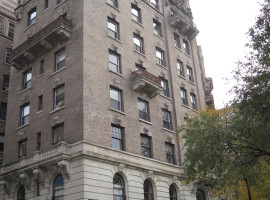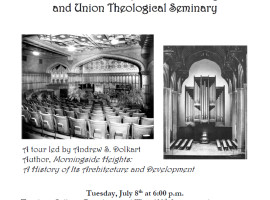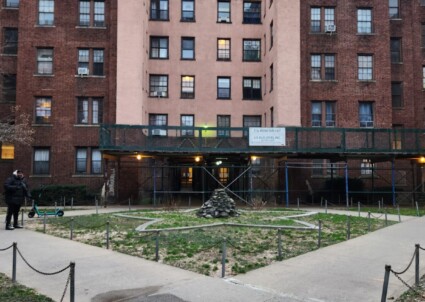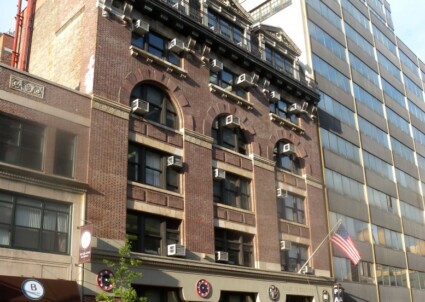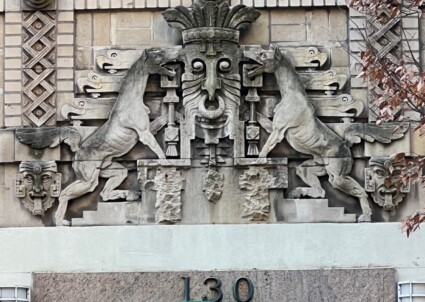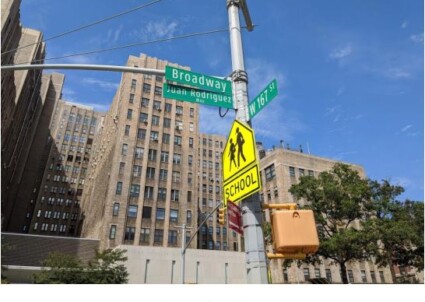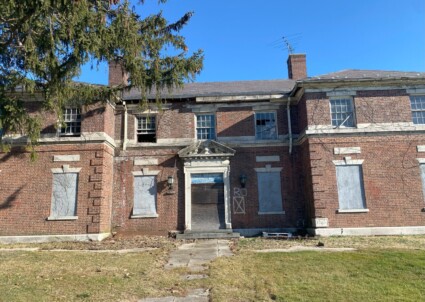Morningside Heights, Manhattan
Morningside Heights is graced with the highest concentration of institutional complexes built in a relatively short period at the turn of the 20th century, both in the city and anywhere in the United States. It is home to monumental places of worship, higher learning and healing, which accentuate its backdrop of rowhouses and apartment buildings, culminating in streetscapes that are both elegant and eye-filling. Topographically, it is situated on a plateau historically known as Harlem Heights, while geographically it is bounded by West 110th Street to the south, West 125th Street to the north, and two Frederick Law Olmsted–designed parks to the east (Morningside Park) and to the west (Riverside Park).
The first institution to move into the area was New York Hospital, which began purchasing land in 1816 to establish the Bloomingdale Insane Asylum (on the present-day campus of Columbia University) and the Leake and Watts Orphan Asylum (on the present-day campus of St. John the Divine) in 1821 and 1834, respectively. The stigma of an insane asylum, compounded by inadequate transit access to the area, hindered other development until the late 19th century, when the hospital auctioned off its real estate holdings and relocated to White Plains in favor of more space and fresher air. The asylum’s relocation prompted a flurry of development by other institutions intent on expansion, starting with the Cathedral of St. John the Divine in 1887 and followed by St. Luke’s Hospital, Columbia College and Teacher’s College in 1892.
The introduction of the subway into Morningside Heights in 1904, coupled with the neighborhood’s magnificent parks and prestigious institutions, led to a frenzy of speculative apartment house construction, attracting middle-class residents who could now commute directly downtown to work. Even before the advent of zoning regulations for land use, developers erected rowhouses and modest apartment buildings on the side streets and grand apartment houses on the avenues, with particularly monumental examples on Riverside Drive, Claremont Avenue and Cathedral Parkway, and mixed-use commercial buildings along Broadway, giving the neighborhood a heterogeneous yet cohesive character. Morningside Heights’ unorthodox yet distinctive sense of place comes from the coexistence of residential and institutional clusters, as exemplified by elegant rowhouses and apartment buildings just steps away from renowned academic institutions and houses of worship.
Today the neighborhood still enjoys this singular sense of place. Its institutions are impressive examples of Beaux-Arts planning and design, including the graceful approach to Grant’s Tomb, the entrance façades of St. John the Divine and Riverside Church aligned with the axes of 112th Street and 122nd Street, and especially Charles McKim’s plan for Columbia University, whose symmetry and axial layout emphasize the monumentality and unity of the surrounding architecture. The residential architecture, though sometimes grand, offers a human scale and balance to the whole neighborhood.

